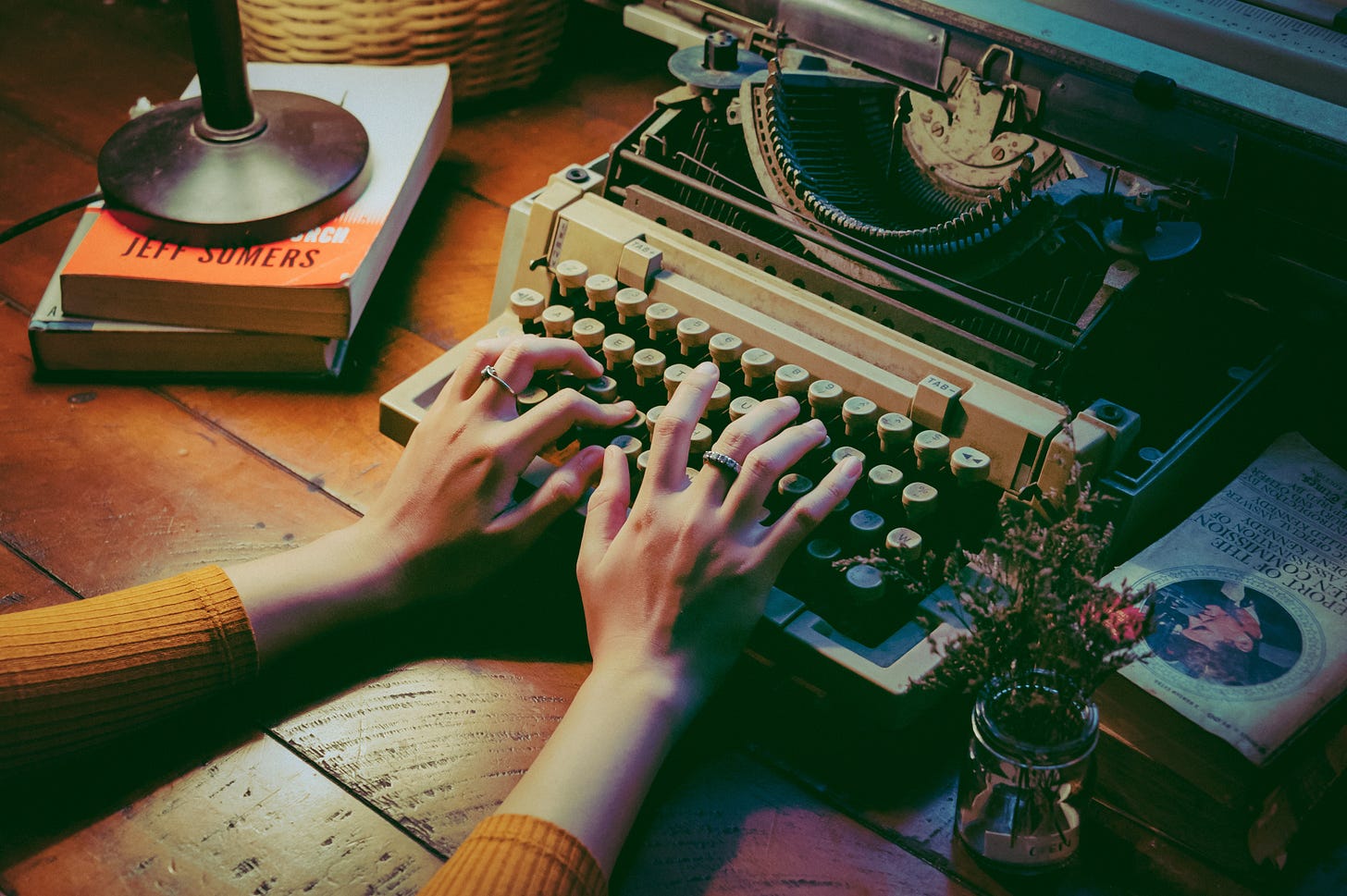Photo by Anna Nekrashevich on Pexels
If you’ve ever accessed any form of social media over the past decade, you will no doubt have come into contact with The Influencer.
In 2009, with the growing ubiquity of social media, particularly blogs and the YouTube video platform, the rise of the influencer economy online really took off, with early influencers such as Zoella (Zoe Suggs) and PewDiePie quickly becoming two of the most successful online influencers.
But though the term ‘influencer’ appears to have appeared within the general vernacular around the late noughties, the artistic influence of musicians, painters, and writers has been around for millennia. Though not known as influencers (and certainly not paid outlandish amounts to advertise commercial goods to their audience) every tradition of art has its trail blazers; the people who appear to have been the first to master a painting technique, a style of pop music, or a literary form, as well as those patrons who have been willing to support and promote their works.
Because I am interested in 20th century literature, I wanted to seek out who had been credited as ‘the first’ to adopt many of the tropes traditionally associated with the modernist movement. My findings were surprising: I thought the obvious candidates would have been James Joyce and Virginia Woolf. But like many examples of artistry, it is often begun by lesser-known writers and artists than those whom made the tradition their own.
Modernist writers in the early part of the 20th century generally rebelled against clear-cut storytelling and formulaic verse from the 19th century. Think of the baggy texts such as George Eliot’s Middlemarch or Henry James’ Portrait of a Lady in comparison to something like Virginia Woolf’s Mrs Dalloway or James Joyce’s Ulysses, with their stream of consciousness prose and the way they follow the thoughts of a single character.
The term ‘stream of consciousness’ is actually thought to have been invented by writer and critic May Sinclair when reviewing novelist Dorothy Richardson’s Pointed Roofs. Sinclair claimed that Richardson’s Pilgrimage sequence, spanning between 1915-1967 and of which Pointed Roofs was the first chapter/novel, showed a technique which portrayed the inner life of the central character; Miriam Henderson’s life as it is lived. Sinclair specifically referenced this technique as ‘stream of consciousness’ and expressed her admiration for the technique.
Critic Hilary Newman,1 however, suggests that Richardson’s Pilgrimage sequence, most specifically Pointed Roofs, was in fact influenced by Charlotte Bronte’s 1853 novel Villette. She points to general aspects of events featured in the novel, as well as echoes of technical aspects such as narrative techniques, imagery and punctuation, claiming that though much has been made of the modernist aspects of the novel, and stressing the autobiographical content of both novels, she believes that Richardson and other modernists ‘think back through their mothers’2 further intimating that in many ways Villette anticipated modernism.
This adds a further layer to the influence of earlier writers, particularly female, to whom early 20th century novelists such as Richardson turned to for inspiration. Virginia Woolf, in turn, referred to Richardson’s style as rendering ‘the psychological sentence of the feminine gender’, seemingly in opposition to Woolf’s own views on the importance of androgyny within the writer’s mind. Louise Treger’s fascinating fictionalised biographical novel The Lodger explores the life of this little-known original influencer of stream-of-consciousness writing.
May Sinclair, meanwhile, as well as bringing Richardson’s originality to the attention of the literary world, was herself a prolific author as well as critic, writing some twenty-three novels, thirty-nine short stores, and several poetry collections beginning in the late nineteenth-century and early twentieth-century. Through her critical reviews, Sinclair was influential in promoting the birth of modernism, promoting the work of writers such as Ezra Pound, for whom she became financial patron, and Dorothy Richardson, as well as the Imagist poets and Vorticism. In addition, Sinclair wrote on Philosophy and was heavily involved in the cultural concerns of the day including creating pamphlets for the suffrage movement and becoming part of an ambulance unit in Belgium at the beginning of the First World War.3
In her novel The Creators, Sinclair tackles the topic of creativity and motherhood, something to which Doris Lessing would later examine in depth within her seminal novel The Golden Notebook.
The Creators is generally considered part kunstlerroman (a novel depicting the formation of the artist) and part New Woman novel, a throw-back to late nineteenth-century fiction written by women often focusing on gender politics and female protagonists who aspire to emotional, sexual, intellectual, and economic independence. In this way, Sinclair, as with other modernist writers, straddled earlier literary traditions whilst forging something new. Within this remit, we can see that Sinclair’s ideas are resonated in much of the early 20th century and beyond women’s writing.
The novel is a study of a group of writers and their struggles within the literary marketplace, and focuses on the inner battles of conventional gender roles and the idea of artistic ‘genius’, as well as the protagonist’s juggling of her artistic genius and her role as wife and mother. Although Sinclair’s novel contains much of the female modernists’ thoughts on the economic and creative freedom of women, it doesn’t feel as influential on the development of the stream of consciousness style influenced by Richardson and adopted by authors such as Woolf and the short stories of Katherine Mansfield.
At a time of great flux within world politics – particularly the two wars in Europe – in which the modernists were finding their form, women’s newly discovered freedoms often flourished, filling gaps in industry left by men serving at the front and leading to a certain degree of economic independence.
Conversely, some of these freedoms and more laissez-faire attitudes towards sexual and emotional freedom were curtailed later in the century following the wars, as governments were keen to get back to the comfortable (for men) status quo of the nuclear family and a booming economy. Women in the 1950’s epitomised this idea of the wife and mother, procreating to rebuild a world depleted by the repercussions of war. Many texts emerged from this curtailing of newly forged freedoms for women, including Betty Friedan’s The Feminine Mystique and Simone de Beauvoir’s The Second Sex.
In 1907, Sinclair found herself a free, independent woman for the first time following the death of her mother and the success of her first novel, The Divine Fire in 1904. Though she clearly showed enthusiasm in the developing literary and artistic modernist movements, Sinclair also developed a keen interest in the Brontë sisters, including contributing criticism, a biography, and a novel The Three Sisters in 1914 based on their lives. This interest led to her fascination in the uncanny and psychoanalysis, leading to her funding of work into investigations into shell-shock for soldiers of the Great War. Sinclair had also written Journal Impressions of Belgium following her brief stint with an ambulance unit in Belgium during the Great War and this remains among the first journals of the war written from the perspective of a woman to be published in Britain.
Within this structure, I would suggest that though Sinclair perhaps did not enjoy some of the financial rewards of the modern-day influencer, she was influential in her support of artistic and societal movements, and her pioneering of such movements led to the popularity of many of the modernist writers of the day.
In recent years, I have often heard suggestions of the rise of the social media influencer as being (mostly) young millennials, making money for work that doesn’t contribute much to the artistic fabric of our society.
If we look to the original influencers within literary and artistic terms, such as Richardson and Sinclair, as well as other genres of art such as Claude Monet, considered to be the father of impressionism (though this movement could also be argued to have been started by John Constable); or the influence of The Beatles over ‘90’s bands such as Oasis, Blur and Pulp; and in turn, the influence of rock and roll stars Elvis, Little Richard, and Buddy Holly over The Beatles…we can see that the idea of the influencer has always been around, albeit in a less obviously marketable fashion. And whilst it may be argued that the names mentioned above are considered masters or geniuses of their form, the cultural landscape of the influencer is something that is inherent in our need to find human, and artistic, connection.
Hilary Newman (2017) The Influence of Villette on Dorothy Richardson’s PointedRoofs, Brontë Studies.
Newman, Ibid, quoting Virginia Woolf.
Further reading: Suzanne Raitt, May Sinclair: A Modern Victorian (Oxford: Clarendon Press, 2000).






This is a fantastic read! I love the connections you’ve made between influencers of the past and social media influencers today, drawing on some really interesting texts. Thank you for sharing :)
Thank you so much for reading and commenting : ) Its a topic I find fascinating.